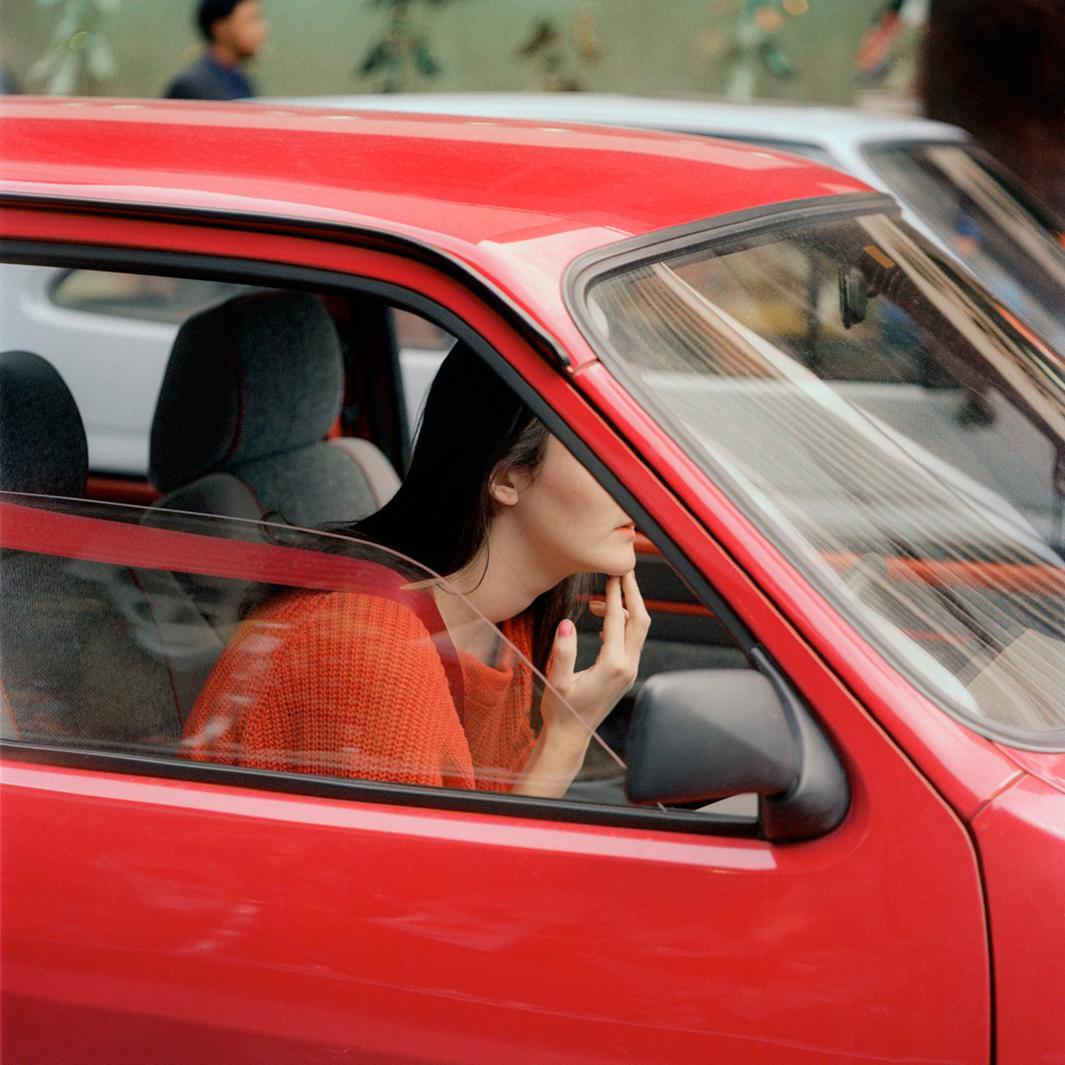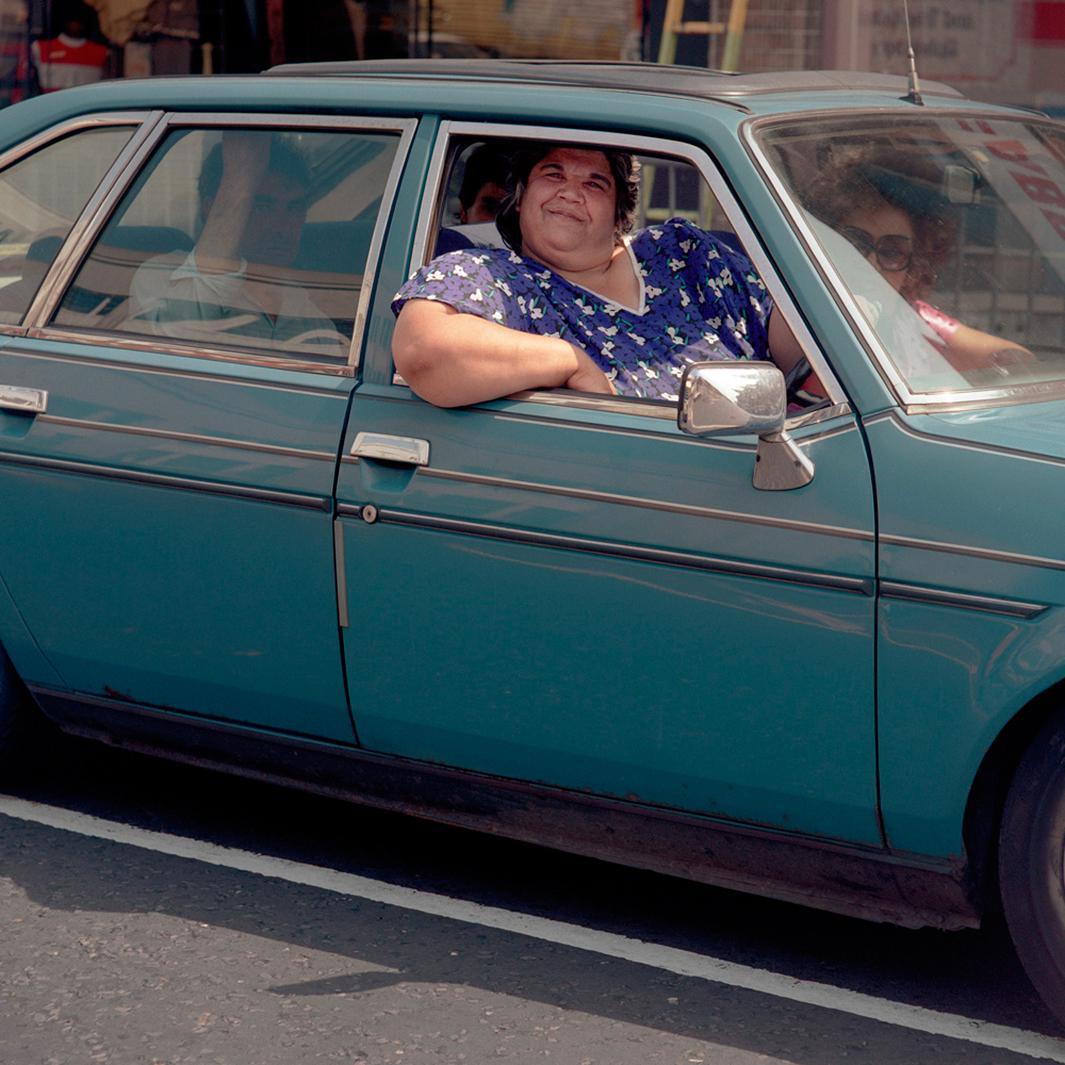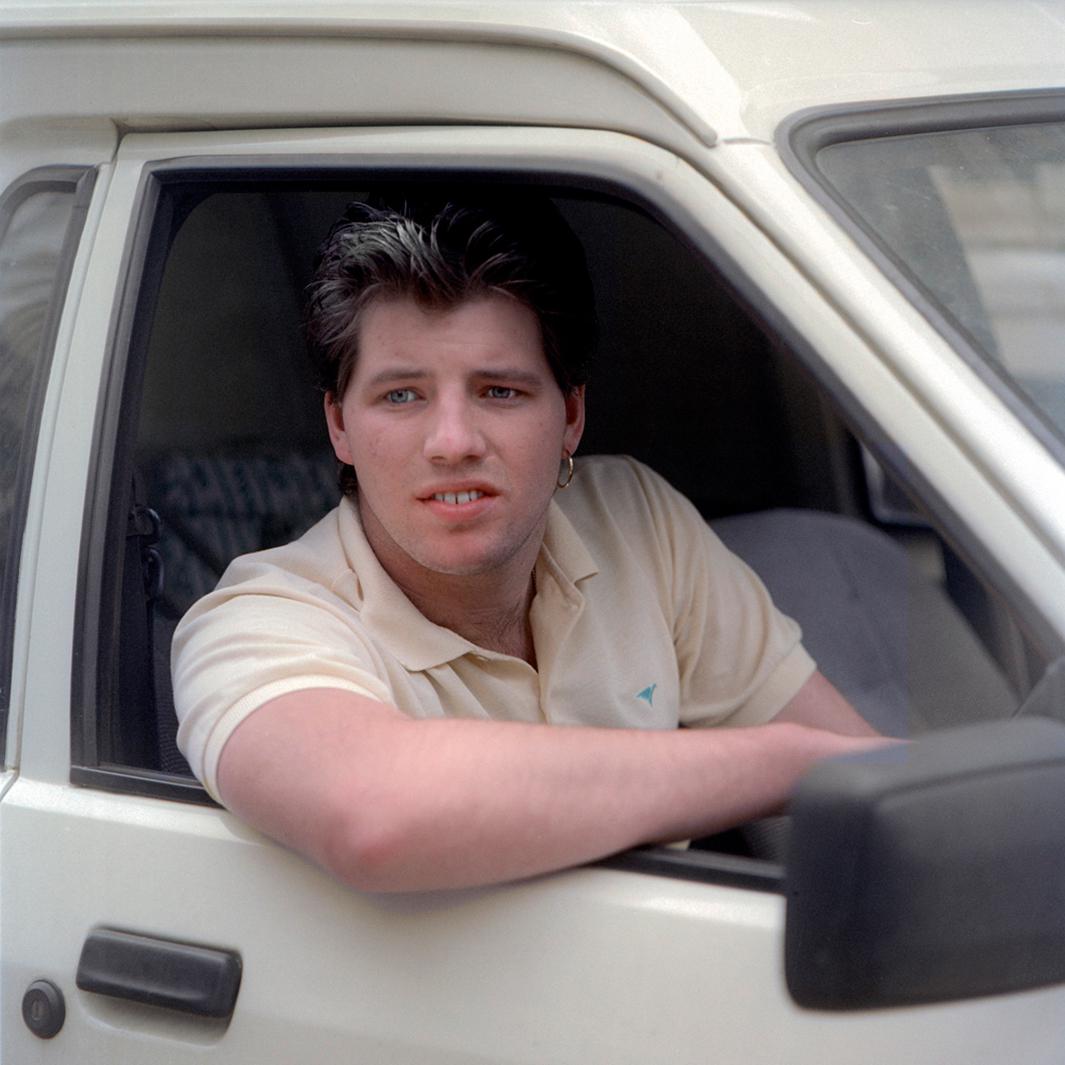Of all the things to photograph, people stuck in traffic jams during the middle of the summer doesn’t really sound like a lot of fun. But Chris Dorley-Brown did just that over the course of two summers in the mid-1980s in East London for what was initially an assignment to photograph the privatization of Rolls Royce. What caught his attention were the traffic jams around the financial district, only a couple of weeks before Margaret Thatcher’s third and final landslide victory.
In total, Dorley-Brown said that he shot around eight rolls of film over two summers (with 12 frames per roll) with two cameras: a Rolleiflex twin lens 3.5 and a Mamiya twin c33. It took him about six hours.
“They are both waist-level finders so that put me at driver level and helped me be a bit more invisible,” he wrote via email. “People are never sure with those viewfinders whether you are looking at them or not so it gives you some space to work without appearing too obtrusive.”
It would be the first time Dorley-Brown would try out color film and he would stick with it for the next two decades. Apart from a few of the images popping up in a couple of group shows, the work wasn’t seen. More than a couple of decades later, Dorley-Brown put some up on his website, which is how Ann Waldvogel of Hoxton Mini-Press spotted them and got in touch to see if there were more images available. There were, and this year Drivers in the 1980s was published.

Chris Dorley-Brown

Chris Dorley-Brown

Chris Dorley-Brown
“It didn’t occur to me to make this current book for nostalgia purposes alone,” Dorley Brown wrote via email. “I have thousands of pictures that could do that but what’s the point? I feel just as nostalgic for last week as I do for 30 years ago; it’s all in the past.”
“What drives me on to make photos is to think about the future. I am making pictures for people who haven’t yet been born. It’s not an anticipation of nostalgia but of course most people who like looking at photographs are interested in the era that they didn’t witness first hand. So it figures that the older the picture is, the more seductive it may become.”
There have been many series about car culture over the years. Dorley-Brown points out Andrew Bush’s classic series Vector Portraits and Ryan Schude’s “Them and Theirs” profiled on Behold last year. Dorley-Brown’s favorite car-related image, however, is Helen Levitt’s Spider Girl or Squatting Girl. He said cars make for good subjects for a number of reasons.
“When I am working I am conscious that I am witness to a unique moment that will never reoccur, it’s very exhilarating no matter how mundane the situation is. This book is really just a collection of portraits, the car windows provide distorted additional frames to the image, but what’s important to me is the atmosphere of captivity and futility of being trapped in a metal and glass box. Cars are meant to provide us with freedom of movement but in this case they are a kind of prison.”

Chris Dorley-Brown

Chris Dorley-Brown

Chris Dorley-Brown

Chris Dorley-Brown
